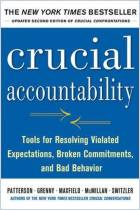
Accountability Leadership
How to Strengthen Productivity through Sound Managerial Leadership
Read or listen offline
Amazon KindleRecommendation
Author Gerald Kraines addresses a neglected area of management and lays out practical, important prescriptions for turning accountability into a linchpin of a thriving organization. Unfortunately, his solid counsel reads like an especially turgid graduate-level textbook. While all the ideas in this book are useful and many are extremely valuable, they’re obscured by the heavy use of jargon (much of it self-defined, so the book often seems to be written in its own unique language). As a result, even though it is only some 220 pages, readers may give up, defeated by stretches of nearly impenetrable text. Kraines, who builds on the work of Elliott Jaques, tries to open doors with accessible case studies, but he soon lapses back into his specialized vocabulary. As a result, getAbstract.com believes the full text will interest mainly a very specific audience: business students and professors, theorists, consultants and high-level managers at large organizations may want to look up particular chapters for details and context. Even if you don’t have the stamina for the whole tome, hang in there for the gems.
Summary
About the Author
President and CEO of The Levinson Institute, a Boston-based leadership development firm, Gerald A. Kraines, M.D., has helped public and private organizations create leadership systems.
















Comment on this summary or Iniciar a Discussão